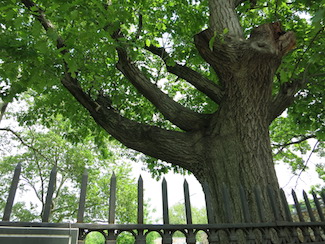
Mullaly, Secretary of the New-York Park Association formed in 1891, aimed "to secure increased park area for the City of New-York" and called for "at least…two great breathing places beyond the Harlem River." By "beyond the Harlem River" he meant the three towns New York City had annexed in 1874: Morrisania, West Farms, and Kingsbridge, which became part of the new borough of The Bronx.
The results of Mullaly's commission: nearly 5,000 acres of parkland, comprising Van Cortlandt, Claremont, Crotona, St. Mary's, Pelham Bay, and Bronx Parks. (That last one encompasses the New York Botanical Garden and the Bronx Zoo.)
Mullaly died in 1911, or 1914, or 1915. (Internet sources disagree.) In the 1920s the City of New York acquired the land that would become Mullaly Park in the High Bridge section of The Bronx. The city has developed it over time beginning in the 1930s "as a multi-use recreational facility that complements Macombs Dam Park to the south," to quote the Parks Department website. It includes playgrounds, a pool, a skate park, basketball courts, and more.
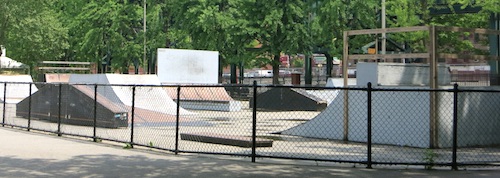
But passive recreation is very possible here too. I entered at E. 165 St. and River Ave. and immediately encountered two totally passive people.

A second later, and a good deal less passively, I was nearly bonked on the head by a stripped ear of corn dropped out of a tree by a squirrel.
I didn't see the squirrel. But the people on the bench explained that my attacker was indeed one of those ratlike creatures whose furry tails and liking for trees rather than trash make them cute. And it did seem the only rational explanation.
Up ahead was a large, densely planted garden area "with an irrigation system, blooming trees, and landscaping." (The pretty tower in the distance isn't a church, it's PS 114, the Luis Lorens Torres School.)
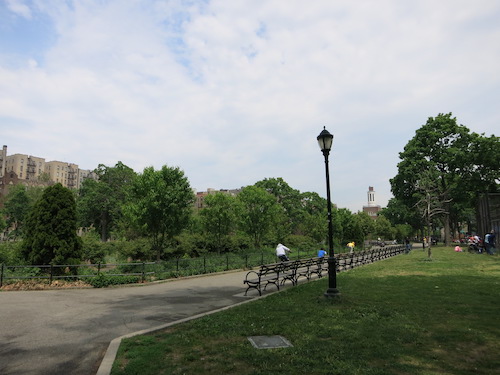
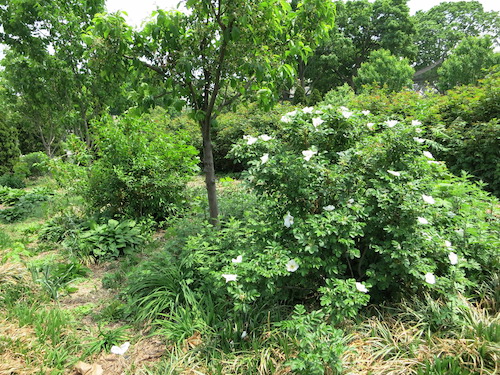
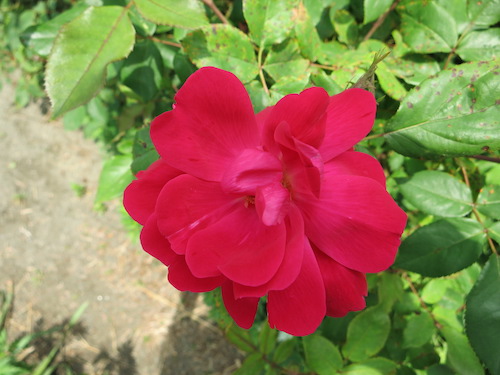
Actually there are two of these garden areas, both threaded with narrow winding paths. I had the southern one all to myself. An organized group of teenagers from The Bronx is Blooming was tending the northern one.
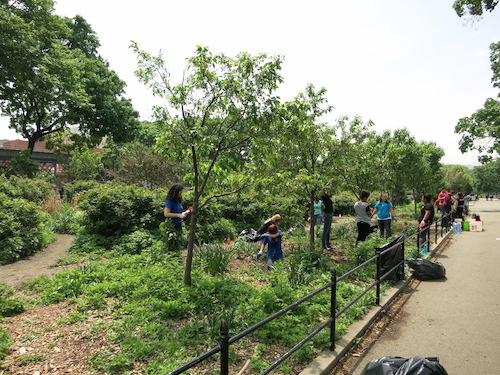
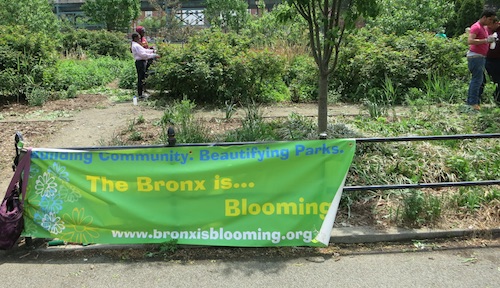
A splashing sound drew my attention, and I was just quick enough to catch this robin after his water-fountain bath.
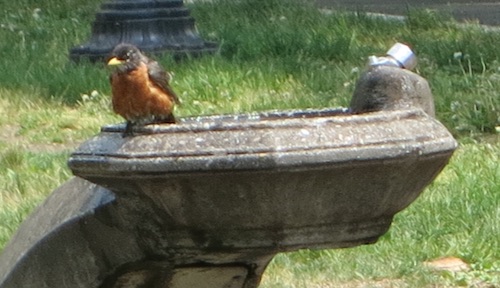
I like these playground dolphins too.
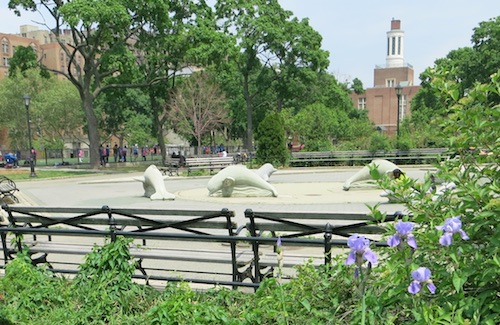
Back in the southern section, besides the skate park there's the big Mullaly Recreation Center (the brick building), more athletic facilities, chess tables, another playground, and a view of Yankee Stadium.

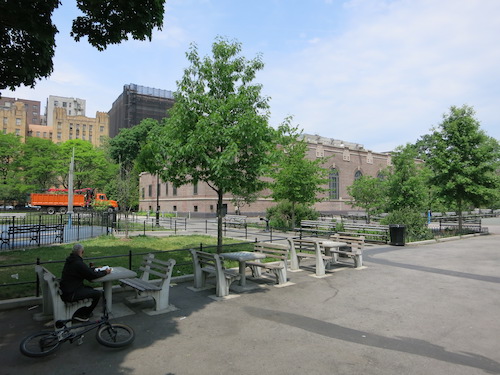
John Mullaly published a book in 1887 vividly describing his vision for the Bronx parks. Google has digitized the book and below is a screen shot of the fancy cover page. He was a fascinating character whose exploits went well beyond park planning: born in Belfast; Civil War draft resistance; a stint as New York Commissioner of Health; and finally dying "almost penniless…in a Second Avenue hall bedroom on a bitter day in 1914," according the October 20, 1929 edition of the New York Herald Tribune, a paper he had written for at yet another stage of his peripatetic career.

"Nearly 4000 acres of free playgrounds for the people." Now that's my kind of visionary. If no one has written a biography of John Mullaly – and it doesn't seem that anyone has – someone ought to.

He was also a well-documented mega racist, so there's that.
ReplyDelete